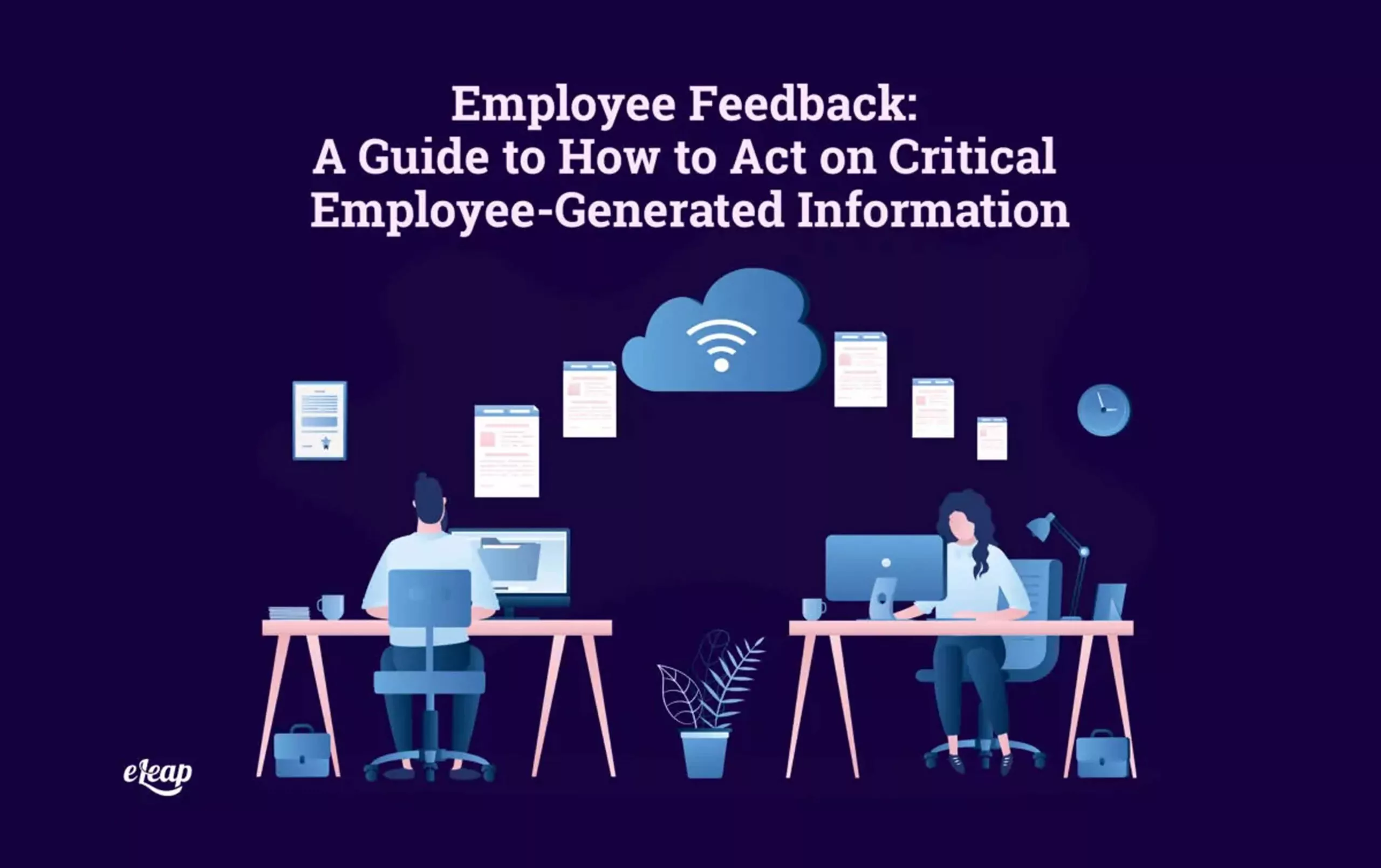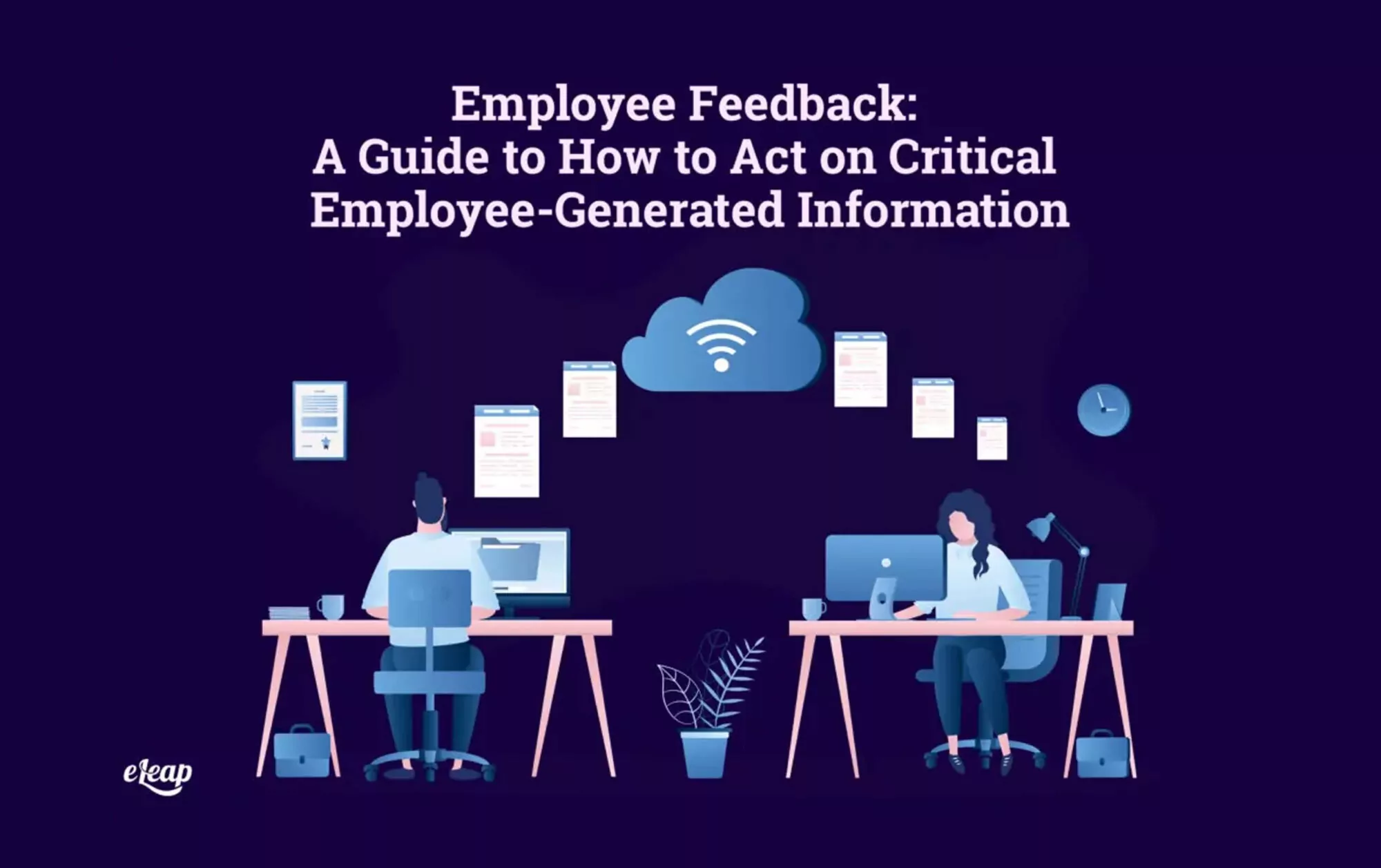Employee Feedback: A Guide to How to Act on Critical Employee-Generated Information

The old performance management methodology is slowly being eroded. Instead, more and more companies are moving to a more agile process that incorporates timely feedback through check-ins and one-on-ones. This results in the ability to create real-time changes in employee performance. The eLeaP Performance Management Plan, which includes a continuous performance management system, provides organizations with powerful options to attract and retain high-caliber team members.
In addition, more and more managers are realizing the importance of not just providing feedback but listening to what employees have to say. Employee-generated information can shed light on critical problems and breakdowns, highlight areas of improvement, and more. However, to enjoy those benefits, organizations must be able to first listen to that feedback and then act on it.
Unfortunately, doing so is often easier said than done. The good news is that acting on employee feedback does not have to require a major shift in organizational processes or the purchase of new software or hardware. It does, however, require an adjustment in thinking, particularly on the part of managers and leaders within the business. Start a 30-day free trial of eLeaP and incorporate effective feedback delivery and analytics into your workflow.

Ask For It
It is impossible to act on feedback if it’s not offered in the first place. Therefore, the first step is to ask for it. That can be harder to do than you might think. This is particularly true if your organization doesn’t have a history of valuing employees’ thoughts and ideas. It might require drilling down into your corporate culture, identifying challenges to the flow and acceptance of feedback, and making any necessary changes.
Once you have eliminated any roadblocks that might be preventing employees from providing feedback, you must decide how to ask for and receive that information. This should be more than just a glorified comment card system – you need to actively solicit feedback.
One way to do that is through employee surveys. These allow you to cast a wide net and solicit feedback from entire teams and departments at the same time. Surveys can be used to gather information about specific areas or broad topics. And, if you keep them anonymous, you will find that the feedback you receive is more accurate and actionable.
Remember that many employees may be hesitant to tie their name to feedback, particularly if that feedback is critical or negative in nature. The fear of backlash is real and can prevent people from sharing important information. Anonymizing your surveys eliminates that hurdle and encourages honesty.
Short and Sweet
Worried that surveys have to be long and convoluted to be of value? That’s not true. Consider HubSpot’s focus on hyper-short, focused surveys. The company explains, “The HubSpot Employee Net Promoter Score survey is just three questions long every time. The logic? We want to ensure that it’s as easy and painless as possible for employees to make their voices heard, so we deliberately and intentionally ensure that the survey is three questions and takes less than 10 minutes to complete.”
Going Beyond Surveys
However, surveys are not the only way you can surface this information. You can and should come right out and ask for feedback during check-ins and one-on-ones. This eliminates the protection afforded by anonymous surveys, but it achieves several other critical goals, including:
- Showing employees that you value what they think and feel
- Enabling a broader discussion about the employee experience
- Surfacing real-time feedback on an incredibly wide range of topics
- The ability to act on critical feedback from managers and leaders
It can be challenging to ensure employees feel safe enough to share their thoughts without the shield of anonymity. For that reason, it is important for leaders to accurately assess their corporate culture and ensure that they can create a sense of psychological safety. Without that, employees will largely be unwilling to share critical feedback.
Explore the Information
Asking for feedback is only the first step. Once you have it, you must explore the data. It is easy to become bogged down or even paralyzed when trying to wade through a sea of information.
One tip is to keep your information-gathering efforts brief. Short surveys, limited questions during check-ins, and the like will help ensure that you’re not drowning in data. Another tip is to keep your questions hyper-focused. Don’t ask for any and all feedback – be specific. “How do you think X is affecting productivity in your department?” or “What can I do to improve performance as your manager?” are good examples.
It’s Time to Act
Finally, once you have asked for and assessed the information, it’s time to put it into action. How, though? It’s not as simple as it might seem.
First, identify what changes need to be made to implement employee feedback. Some may be relatively simple, while others may require considerable time, effort, and money. For instance, improving performance within a team might be as simple as providing additional tools and training. However, improving morale across the company might require an investment in an employee wellness plan that includes company-issued fitness trackers, access to a gym, and even paid “wellness days.”
The most important thing is this – act, even if you are only able to act on a few pieces of feedback at a time. Clearly communicate what you are doing and why to your employees so that they can connect the dots between actions and feedback. If you show employees that you not only value what they think but are prepared to make real, lasting changes to incorporate that feedback, engagement, and motivation increase, employee retention improves, morale rises, and your business will be better able to compete.
Make an Effort to Achieve Deeper Changes
Finally, make a concerted effort to make deeper changes, particularly as they concern your corporate culture. A culture that embraces listening and values employee input will help your organization grow and thrive. After all, your organization is just a façade – the real, living business is made up of your employees. Value what they think and feel, and they will return the favor, propelling the business to new heights. Use the eLeaP system to help make real change in your organization.